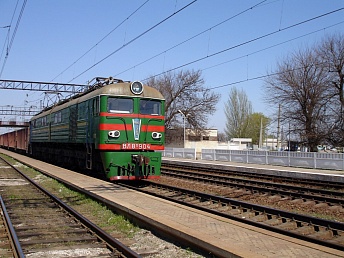
North-South Railroad Competitions Reordering Geopolitics of the Caucasus
Publication: Eurasia Daily Monitor Volume: 12 Issue: 156
By:

For most of the post-Soviet period, politicians and pundits have focused on east-west transportation corridors in the southern Caucasus. But today, two north-south railway projects—one that would link Azerbaijan and Iran, and a second that would connect Armenia and Iran (see EDM, September 25, 2014; June 24, 2015)—have the potential to reorder the geopolitical map of the region. Besides increasing the influence of Iran and Russia, as well as decreasing the influence of Turkey, Georgia, and the United States, these transit corridor projects could further complicate any resolution of the Karabakh dispute between Baku and Yerevan.
Though conceived years ago, both of these railway links have only reemerged as active possibilities in the wake of the nuclear program agreement between Tehran and the P5+1 (the United States, the United Kingdom, France, Russia, China and Germany) and the expected lifting of sanctions against Iran. These two major transit projects are still mostly in the planning stages. Nonetheless, it already seems clear that the one linking Azerbaijan and Iran is quite likely to be carried through—especially because of the trade advantages it would offer the Russian Federation and the Caspian littoral states. Whereas, the rail line between Armenia and Iran may not, because of the enormous difficulties it faces—chief among them is Yerevan’s lack of money to pay its share for a rail line that would help end its international transportation isolation.
Yet, because the creation of these rail links would so transform relations between Russia and Iran and reduce significantly Turkish and US influence in the region, Moscow and Tehran are likely to press forward with both railroad projects. Russian threats to back one of the projects over the other will probably be a means of gaining concessions from the country threatened to remain left out. Still, Moscow has a vested interest in having both transit corridors built as a means of reducing traffic on east-west lines and securing its dominance of the transportation nets in the region. Consequently, if either or both are, Russia and Iran will become the dominant players in the region, and Moscow will gain a trump card in the resolution or more likely continuing non-resolution of the dispute between Azerbaijan and Armenia (see EDM, August 31).
The Azerbaijan-Iran line is the more likely project to be built not only because it would carry more freight and involve more countries—including Russia—but also because the two countries have sufficient funds to pay for its construction without having to turn to Moscow or anyone else for assistance. Officials in Baku and Tehran have been talking about building such a line for two decades, but the West’s efforts to isolate Iran and to promote east-west rather than north-south transportation corridors have slowed discussions. However, in August 2015, railway officials from the two countries met in Tehran, encouraged by Iranian President Hassan Rouhani’s statement that for Iran, Azerbaijan is “the gate to the Caucasus” and for Azerbaijan, Iran “can become Baku’s path to the Persian Gulf” (Ng.ru, August 19).
Building such a link is relatively easy given that both countries already have rail networks approaching the border. They would only have to develop arrangements to deal with the different gauge tracks the two use and also construct a 100-meter railway bridge over the Astarachay River. If that happens—and it seems probable—the line will carry up to two million tons of cargo a year and make it possible for Azerbaijan and Russia to export goods and raw materials to the Indian Ocean rather than having to rely on Western routes. Moreover, with the completion of this rail corridor, Iran will be able to send goods north to Russia and perhaps Europe.
The prospects for an Armenian-Iranian line are less bright. But the role such a railway could play in ending Armenia’s international isolation—it faces an embargo from Turkey and Azerbaijan and limited transportation options across Georgia—mean that ever more Armenians are focusing on the need to build it. Few Armenian experts can identify where the money for such a project, estimated to cost up to $3.5 billion, might come from besides Russia. As a result, some have expressed concern that if Moscow provides the money, it will gain even greater control over Armenia. Furthermore, some Armenians recognize that Moscow has fewer reasons to help Yerevan. As they note, Moscow will not benefit directly from an Iran-Armenia railroad corridor unless conditions also change in Georgia or Azerbaijan and Turkey—thus allowing Russia to complete its overland link to Armenia (Kavpolit.com, August 25).
If Moscow will not finance this railroad, would Tehran? It seems likely that Iran would do so only if it secured enormous political influence in Yerevan, transforming Armenia into almost the position of a dependent satellite. That is because Iran could expect to gain little else from such a line given the blocking of Armenia’s other borders and the tiny size of the Armenian domestic market. But if neither Moscow nor Tehran pays, who else might? The West is an unlikely candidate, although some Armenians are now talking about the possibility that the Armenian diaspora in the West could come up with the money—much as Kirk Kirkorian did 15 years ago for other parts of Armenian infrastructure. But the amount of money needed now is much, much larger.
Nonetheless, many Armenians expect, given their economic desperation, that the rail line to Iran will be built, a situation that gives Moscow the whip hand and that will likely be a key part of the geopolitical competition in the region in the coming months.




